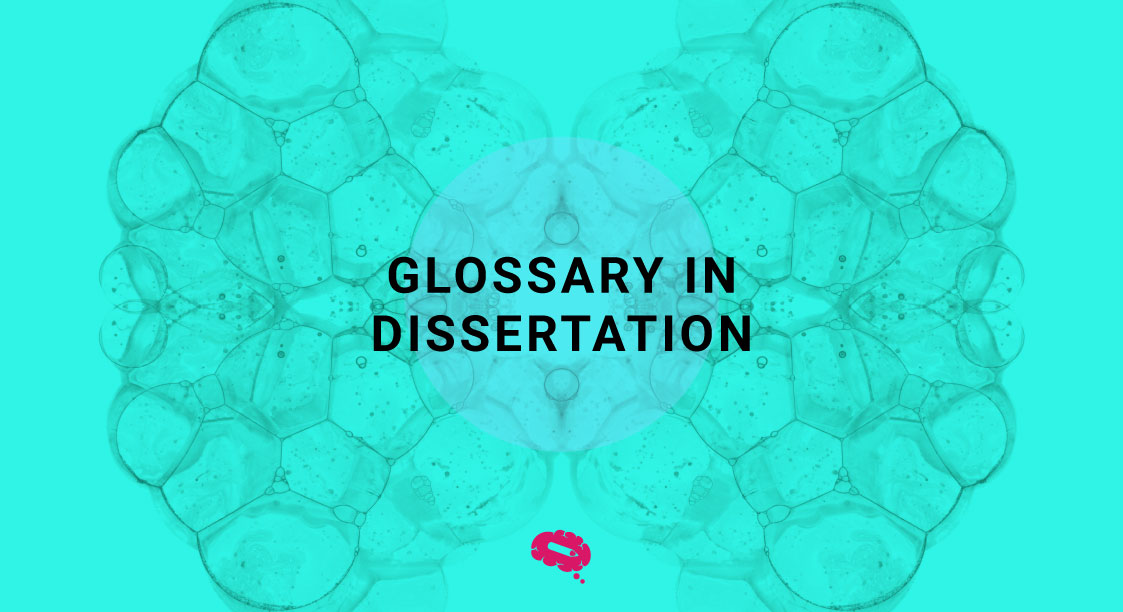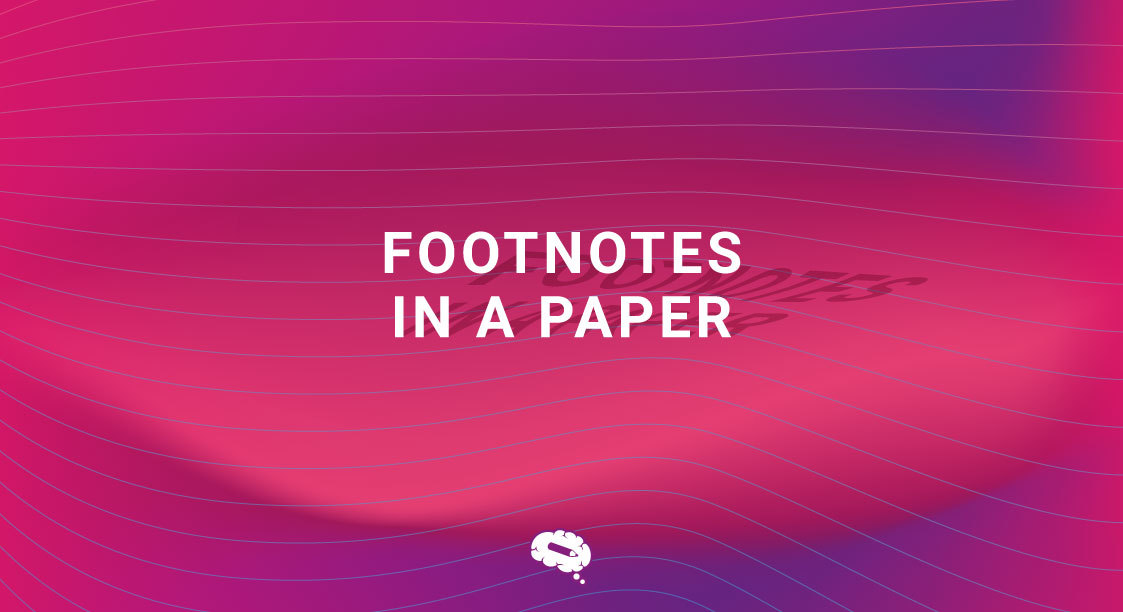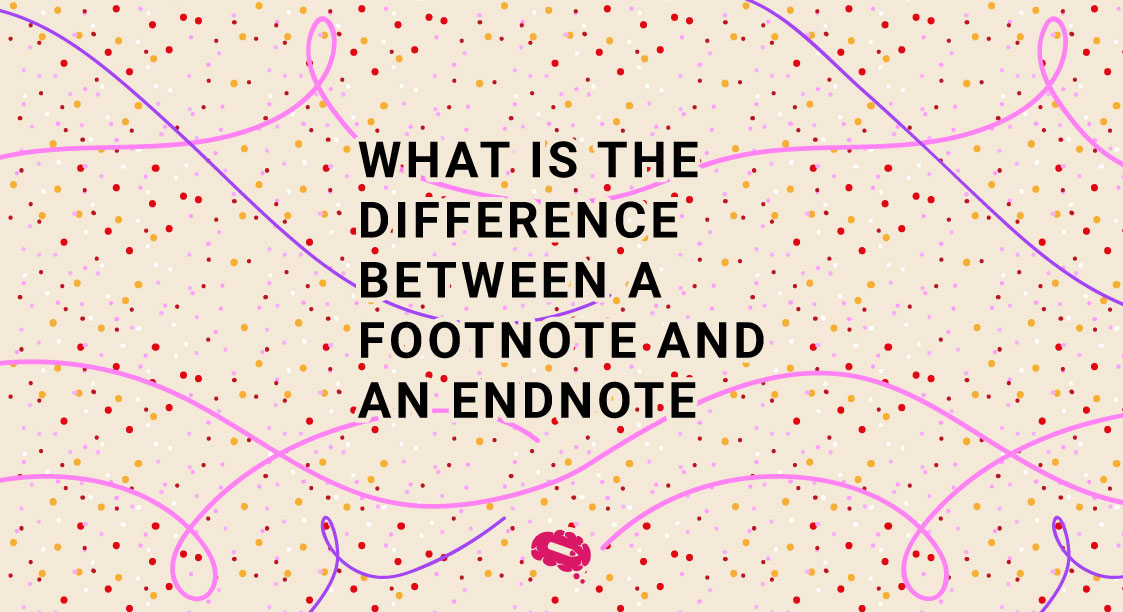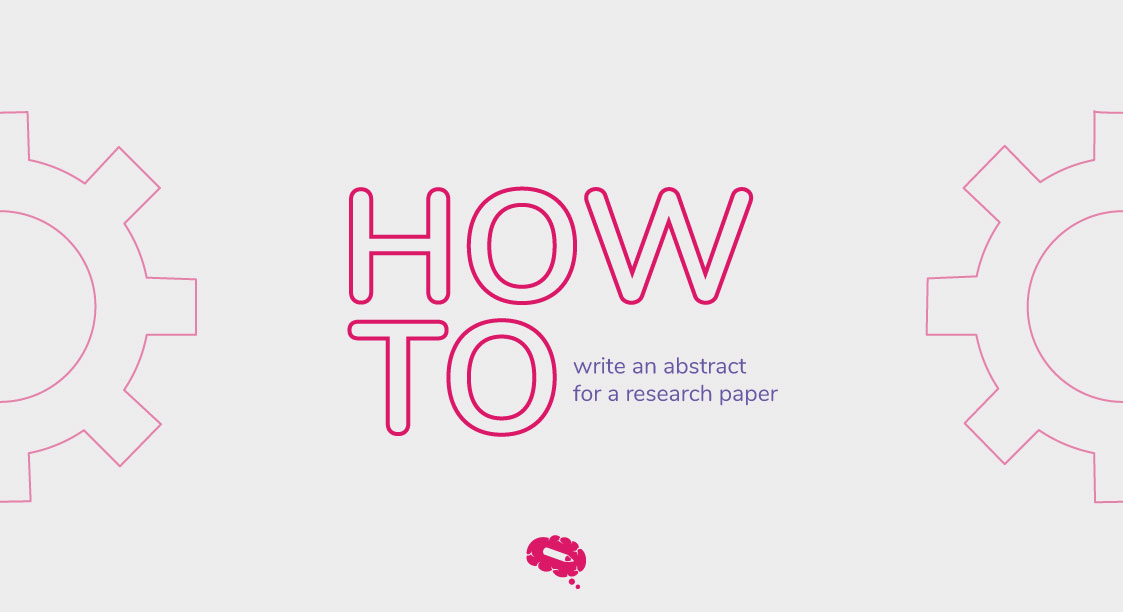Creating a glossary in a dissertation is an essential step to ensure clarity and comprehensibility for readers who may not be familiar with specialized terminology. Glossary entries and definitions are considered part of shared common knowledge and may not necessarily have to be cited, but it is still important to cite sources to avoid accidental plagiarism. A well-crafted glossary provides concise definitions of key terms and concepts, aiding in the reader’s understanding and enhancing the overall coherence of the document. In this guide, we will delve into the importance of including a glossary in a dissertation, how to structure it effectively, and best practices for curating entries that are both informative and accessible. Let’s explore how to make your dissertation more reader-friendly with a comprehensive glossary.
Importance of a Glossary
Clarifying Technical Terms
A glossary in a dissertation plays a pivotal role in clarifying key terms that may be unfamiliar to the reader. Academic writing often involves the usage of specialized language and jargon that can be daunting for those not well-versed in the subject matter. Citing the definition in-text can provide a more explicit elaboration of a given point within the document. By providing clear and concise definitions, a glossary ensures that readers can grasp the nuances of your discussion without confusion. This not only aids in better comprehension but also makes your research more accessible to a broader audience. Moreover, it demonstrates your meticulousness and attention to detail, reinforcing the credibility of your work. Including a glossary is particularly important in interdisciplinary research, where terms may have different meanings across fields. Thus, a well-structured glossary is essential in enhancing the readability and overall coherence of your dissertation.
Enhancing Readability
A glossary in a dissertation significantly enhances the readability of your document. A glossary list plays a crucial role in providing explanations and meanings of technical terms used in the paper. When readers encounter unfamiliar terms, they can quickly refer to the glossary for precise definitions, avoiding the need to search for explanations elsewhere. This uninterrupted flow of reading helps maintain their focus and engagement with your content. Additionally, a glossary can prevent misinterpretations by providing authoritative definitions of complex terms. By offering these clarifications, you ensure that your arguments and findings are accurately understood, thereby strengthening your overall narrative. Moreover, a glossary serves as a valuable reference tool, particularly in lengthy dissertations, where readers might forget the meanings of earlier introduced terms. In essence, a well-crafted glossary enhances the user experience by making your dissertation more approachable and easier to navigate, thereby broadening its appeal and impact.
Supporting Non-Experts
A glossary in a dissertation is especially beneficial for non-experts who may not be familiar with the specialized terminology of your field. Academic dissertations often attract a diverse readership, including peers from other disciplines, policymakers, and even the general public. If the dissertation does not contain a lot of technical terms, the glossary can be replaced by footnotes to provide explanations and meanings of the few terms used. Providing a glossary ensures that these readers can fully engage with your work without being hindered by unfamiliar terms. By translating complex jargon into accessible language, you make your research more inclusive and widely understood. This not only broadens the impact of your findings but also fosters interdisciplinary dialogue. Moreover, supporting non-experts through a glossary demonstrates a commitment to clear and effective communication, which is a hallmark of good scholarship. In summary, a well-curated glossary makes your dissertation approachable to a wider audience, enhancing its relevance and reach.
Creating Your Glossary
Selecting Relevant Terms
When creating a glossary in your dissertation, selecting relevant terms is a crucial step. Begin by identifying the specialized terminology and jargon that are central to your research. An in-depth exploration or analysis of specific components or aspects of your dissertation can help in selecting the most relevant terms for the glossary. These could be technical terms, acronyms, or concepts that are specific to your field of study. It is important to consider the perspective of your readers—both experts and non-experts—when deciding which terms to include. Ask yourself whether a term is likely to be unfamiliar or ambiguous to someone outside your immediate research community. Additionally, review your dissertation to spot any terms that recur frequently and are integral to understanding your arguments. By focusing on the most pertinent terms, you ensure that your glossary is both comprehensive and useful. Keep in mind that the goal is to enhance clarity and accessibility, so avoid including overly basic terms that your audience is likely to know.
Defining with Precision
Defining terms with precision is a key aspect of creating an effective glossary in your dissertation. Adding page numbers to the terms in a glossary allows readers to easily find where the terms are used in the text. Each definition should be clear, concise, and accurate, providing the reader with a quick yet thorough understanding of the term. Avoid using overly complex language or technical jargon within the definitions themselves. Instead, aim for simplicity and clarity, ensuring that even readers with limited background knowledge can grasp the meaning. It is also important to be consistent in your definitions. If a term has multiple meanings, specify which one is being used in the context of your research. Additionally, providing examples or context can further clarify the term’s application and relevance. Remember, the purpose of a glossary is to aid comprehension and enhance the reader’s experience. Therefore, precision in your definitions is paramount, as it eliminates ambiguity and ensures that your findings and arguments are correctly interpreted.
Organizing in Alphabetical Order
Organizing your glossary alphabetically is the most straightforward and user-friendly method. An alphabetical arrangement allows readers to quickly locate specific terms without having to sift through the entire list. Additionally, organizing abbreviations in a glossary as a separate list from the main definitions makes it easier for the reader to navigate and understand the content. This structure mirrors that of dictionaries, making it intuitive for users who are accustomed to this format. Begin by listing all the terms you plan to include and then sort them alphabetically. Ensure that each entry is clearly distinguished, possibly using bold or italics for the terms themselves. Consistency in formatting is key to maintaining a clean and professional appearance. Additionally, if you have a large number of terms, consider breaking them into sections based on the initial letter for easier navigation. An alphabetically organized glossary not only enhances usability but also reflects a methodical and organized approach, further reinforcing the credibility and thoroughness of your dissertation.
Placement in Dissertation Paper
Introduction Section
Placing your glossary in the introduction section of your dissertation can be highly effective. By situating it early in your document, you provide readers with the necessary tools to understand specialized terms right from the start. This preemptive approach ensures that readers are not confused by unfamiliar terminology as they delve into your research. It also sets the stage for a smoother reading experience, allowing them to focus on the content without frequent interruptions to seek definitions. Including the glossary in the introduction serves as a helpful guide, particularly for non-experts or those new to your field. Additionally, it demonstrates your consideration for the reader’s experience, showcasing your commitment to clear and accessible communication. Overall, positioning the glossary in the introduction is a strategic choice that enhances the readability and comprehensibility of your dissertation.
Appendices
Including your glossary in the appendices is another common and effective placement option in a dissertation. This approach keeps the main text of your dissertation uncluttered, allowing readers to focus on your core arguments and findings without frequent breaks to consult definitions. By placing the glossary in the appendices, you provide a comprehensive reference section that readers can easily access as needed. This is particularly useful for lengthy dissertations with extensive specialized terminology. It also allows for a more detailed and expansive glossary, as space constraints are less of an issue in the appendices. However, it is important to clearly indicate the existence and location of the glossary early in your dissertation, such as in the table of contents or through a brief mention in the introduction. This ensures that readers are aware of this valuable resource and can utilize it effectively throughout their reading.
Footnotes and Endnotes
Using footnotes and endnotes for glossary terms is a flexible option for dissertations. This method allows you to provide definitions directly where the terms appear, offering immediate clarification without requiring the reader to navigate to a separate section. Footnotes are typically placed at the bottom of the page, making them easily accessible, while endnotes are compiled at the end of each chapter or the entire document. Both methods ensure that readers have instant access to definitions, enhancing the flow and comprehension of your text. However, this approach can become cumbersome if your dissertation contains a large number of specialized terms, potentially cluttering the pages with excessive notes. Therefore, it is best suited for dissertations with fewer glossary entries. Regardless of the method, the key is to maintain consistency and ensure that all terms are clearly and accurately defined, supporting the reader’s understanding of your work.
Best Practices
Consistency in Definitions
Maintaining consistency in your definitions is crucial for an effective glossary in your dissertation. Consistency ensures that each term is clearly understood in the same way throughout the document, preventing confusion and misinterpretation. When defining terms, use a standard format and structure to provide a uniform reading experience. For example, always include the term, followed by a concise definition and, if necessary, an example or context. Avoid using different definitions for the same term in various parts of your dissertation, as this can lead to ambiguity. Additionally, if you refer to external sources for definitions, ensure that these sources are credible and cited consistently. Consistent definitions not only enhance the readability of your dissertation but also reflect your attention to detail and scholarly rigor. In summary, a uniform and systematic approach to defining terms strengthens the clarity and coherence of your glossary, making your dissertation more accessible and understandable.
Avoiding Jargon
Avoiding jargon in your glossary is essential to ensure that it serves its intended purpose—clarifying terms for all readers. While your dissertation may require the use of specialized language, the glossary should translate this jargon into clear, straightforward definitions. Using jargon within definitions defeats the purpose of a glossary and can alienate readers who are not experts in your field. Aim for simplicity and clarity, employing plain language that can be easily understood by a broad audience. If a term is unavoidably complex, consider breaking down its definition into more digestible parts or providing a brief example to illustrate its meaning. Remember, the goal is to make your dissertation accessible and comprehensible to as many readers as possible. By avoiding jargon in your glossary, you enhance the overall readability of your document and ensure that your research can be appreciated and understood by a wider audience.
Keeping it Concise
Keeping your glossary entries concise is a best practice that enhances the usability and effectiveness of your dissertation. While it is important to provide clear and accurate definitions, overly lengthy explanations can overwhelm readers and defeat the purpose of a glossary. Aim to distill each term down to its essential meaning, using as few words as possible without sacrificing clarity. Concise definitions are easier for readers to quickly comprehend, allowing them to maintain their focus on the main content of your dissertation. If a term requires a more detailed explanation, consider providing a brief summary in the glossary and directing readers to a specific section of your dissertation for further information. This approach ensures that your glossary remains a handy reference tool rather than becoming another lengthy section of text. In summary, concise entries in your glossary contribute to a more efficient and reader-friendly dissertation.
Common Mistakes
Overloading with Terms
One common mistake when creating a glossary in a dissertation is overloading it with too many terms. While it is important to provide definitions for specialized terminology, including every possible term can overwhelm readers and dilute the effectiveness of the glossary. Focus on terms that are essential for understanding your research and are likely to be unfamiliar to your audience. Including overly basic or tangentially related terms can clutter the glossary and make it harder for readers to find the information they truly need. Additionally, an excessively lengthy glossary can give the impression of a lack of focus or an attempt to pad the document. Aim for a balance between comprehensiveness and relevance, ensuring that each term included serves a clear purpose in aiding comprehension. By avoiding the overload of terms, you can create a more streamlined and useful glossary that enhances the readability and coherence of your dissertation.
Vague Definitions
Vague definitions are a common pitfall when creating a glossary for your dissertation. Definitions that lack specificity can lead to confusion and misinterpretation, defeating the purpose of the glossary. It is important to provide clear, precise, and unambiguous explanations for each term. Avoid using imprecise language or circular definitions that do not add clarity. Instead, aim to offer concrete and easily understandable explanations that leave no room for doubt. If a term is complex, break it down into simpler components and provide context or examples to aid understanding. Remember, the glossary should serve as a reliable reference for readers, ensuring they can accurately grasp the terminology used in your research. By avoiding vague definitions, you enhance the clarity and effectiveness of your glossary, thereby improving the overall readability and comprehensibility of your dissertation.
Inconsistent Formatting
Inconsistent formatting is a common mistake that can undermine the effectiveness of your glossary in a dissertation. Uniform formatting ensures that your glossary appears professional and is easy to navigate. Discrepancies in font size, style, or layout can distract readers and make it difficult to find and understand terms. To maintain consistency, establish a clear format for your entries from the outset. For example, you might choose to bold the terms and use regular text for the definitions. Additionally, decide on a uniform structure for definitions, such as starting with a brief explanation followed by an example if needed. Consistent formatting also extends to the organization of the glossary, such as maintaining alphabetical order and using the same punctuation style throughout. By adhering to a consistent format, you enhance the readability and professionalism of your glossary, making it a more effective tool for aiding comprehension in your dissertation.
Elevate Your Scientific Graphics with Mind the Graph
Mind the Graph is your go-to platform for creating high-quality, scientifically accurate illustrations. With its intuitive design and extensive library of templates, you can effortlessly transform complex research data into visually appealing graphics. Whether you’re preparing for a presentation, designing a research poster, or enhancing your paper, Mind the Graph ensures your visuals are clear, engaging, and professional. Take your scientific communication to the next level – sign up for free and start designing today!

Subscribe to our newsletter
Exclusive high quality content about effective visual
communication in science.











